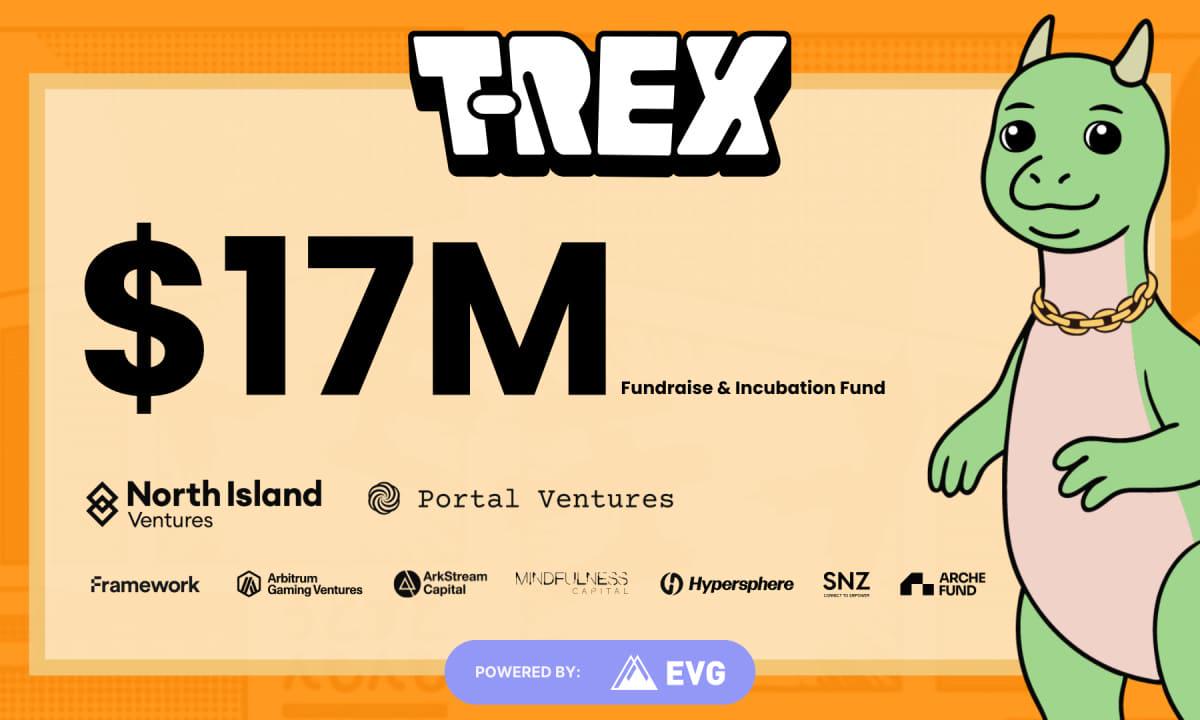Author: Zen, PANews
Traditional Web2 platforms are typically controlled by centralized companies, where the value of user-generated data and traffic is aggregated and commercialized by the platform, making it difficult for users to directly gain value from their content creation or interactions. According to the principles of "decentralization, user ownership, and value consensus" emphasized by Web3, the attention and content value of users should be directly controlled by the users themselves.
In the context of user sovereignty and value distribution, there are already several projects in the Web3 industry attempting to address these issues, and the Web3 consumer entertainment platform T-Rex is one of them. Recently, the project completed a $17 million Pre-Seed funding round, with investors including Portal Ventures, Framework Ventures, and Arbitrum Gaming Ventures.

T-Rex is designed specifically for consumer-grade entertainment and content distribution, led by Everest Venture Group (EVG), aiming to bring mainstream internet users and content creators into the Web3 ecosystem. It utilizes the concept of "attention economy" to record user interactions on platforms like social media and video on-chain and provide crypto rewards, aiming to address the "digital ghost town" phenomenon and the "mercenary user" problem in the blockchain ecosystem.
Targeting Ordinary Consumers with an "Attention Engine"
The core goal of T-Rex is to become the infrastructure of the Web3 attention layer: by implementing built-in distribution and incentive mechanisms between Web2 platforms and blockchain through a browser plugin (Chrome extension), allowing users to naturally earn token rewards in their familiar social, video, and entertainment environments. The target user group for T-Rex mainly consists of ordinary consumer-level users, such as internet users who regularly use social entertainment platforms like YouTube, TikTok, and Twitter, as well as content creators and gamers, who have high engagement with entertainment content.
The T-Rex tech stack is built using the Nitro engine provided by Arbitrum Orbit, inheriting the advantages of Arbitrum's customizable chains, achieving ultra-high throughput, low latency, and extremely low transaction costs, meeting the demand for instant response in consumer-grade applications. Its core innovation is the Proof-of-Engagement (PoE) consensus mechanism: the platform discreetly captures user interactions on commonly used social platforms through the browser plugin, generating privacy-protected on-chain proofs for actions like liking, watching videos, and sharing content, automatically issuing points and token rewards. This mechanism focuses on verifying and assessing genuine user interactions, effectively distinguishing real users from machine behaviors.

To enhance user experience, T-Rex is designed with the principles of simplifying processes and lowering barriers. Users only need to install the T-Rex browser plugin to continue browsing on their favorite social media and video sites, with all interactions automatically recorded and instantly converted into rewards, without the need to manually create wallets or understand crypto technology. The plugin is scheduled to launch this summer, providing a familiar interface that makes users feel like they are using a regular Web2 platform while completing Web3 on-chain and reward distribution in the background. The platform also offers comprehensive documentation, APIs, and SDKs for developers to simplify the development and integration of consumer-grade dApps, and has established an incubation fund of approximately $8 million to support ecosystem building, technical resources, and community operations.
In terms of security, T-Rex introduces zkTLS (Zero-Knowledge Transport Layer Security) technology to protect data privacy, achieving secure connectivity between Web2 content data and Web3 reward links. Additionally, as a chain built on Ethereum ecosystem technology, T-Rex inherits Ethereum's security and broad compatibility, allowing seamless integration with mainstream wallets like MetaMask and other Ethereum ecosystem protocols, facilitating cross-chain asset flow and tool reuse.
Token Incentives + Is the Attention Economy Feasible?
There have been precedents for projects targeting user attention and converting it into crypto rewards, with the Brave browser being a representative of such projects that has been online for several years and is considered an early explorer of the Web3 attention economy.
Brave launched the optional Brave Rewards feature in 2019, providing Ethereum-based Basic Attention Token (BAT) rewards. Brave Rewards allows users to selectively view privacy-protecting ads and earn BAT rewards based on views and engagement, with Brave taking 30% of the ad revenue and distributing the remaining 70% to users. Users can use the BAT earned to tip websites or content creators, withdraw to crypto wallets like Uphold and Gemini, or use it for purchasing gift cards and other consumption scenarios.

According to data recently released by Brave co-founder Brendan Eich, as of April 2025, Brave has reached 87 million monthly active users and approximately 36 million daily active users, indicating a considerable market acceptance. Brendan stated that Brave's goal for this year is to achieve 100 million monthly active users.
Although T-Rex and Brave share similar philosophies, both aiming to convert user browsing or interaction behaviors on Web2 platforms into quantifiable token rewards, there are significant differences in their business models, technical paths, and ecological scopes. Brave focuses on "privacy-first ad incentives," while T-Rex expands to all social and content interaction behaviors, attempting to promote attention incentives in a larger-scale consumer application scenario.
Overall, Brave's user growth, revenue curve, and ecosystem expansion indicate that the "attention economy" has considerable prospects in the mainstream consumer market and has broad appeal among the mainstream Web2 audience. With its focus on a wider range of scenarios covering social, video, gaming, e-commerce, and lower usage barriers, T-Rex may have the potential to achieve breakthroughs in the consumer-grade Web3 space.
免责声明:本文章仅代表作者个人观点,不代表本平台的立场和观点。本文章仅供信息分享,不构成对任何人的任何投资建议。用户与作者之间的任何争议,与本平台无关。如网页中刊载的文章或图片涉及侵权,请提供相关的权利证明和身份证明发送邮件到support@aicoin.com,本平台相关工作人员将会进行核查。




